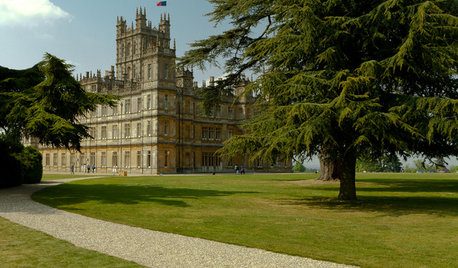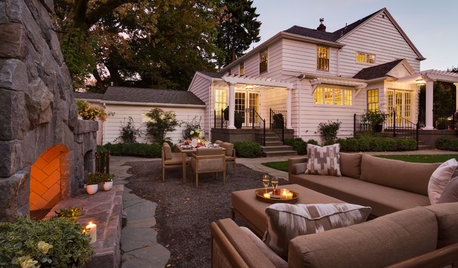You've bought a famous garden. Now you.....
ginny12
19 years ago
Related Stories

WORLD OF DESIGNEngland’s Most Famous Garden Designer Has These Tips for You
Lancelot 'Capability Brown' was born 300 years ago, but his ideas about naturalistic landscape design may be more relevant than ever
Full Story
LIGHTINGSo You Bought a Cave: 7 Ways to Open Your Home to Light
Make the most of the natural light your house does have — and learn to appreciate some shadows, too
Full Story
GARDENING AND LANDSCAPINGHouzz Survey: See What Homeowners Are Doing With Their Landscapes Now
Homeowners are busy putting in low-maintenance landscapes designed for outdoor living, according to the 2015 Houzz landscaping survey
Full Story
CONTAINER GARDENSPatio-Perfect Berry Bushes Like You’ve Never Seen
Small enough for pots but offering abundant fruit, these remarkable bred berries are a boon for gardeners short on space
Full Story
EDIBLE GARDENSA Formerly Weedy Lot Now Brims With Edibles and Honeybees
Photographers transform their barren backyard into an oasis filled with fruit, vegetables, honey, eggs and more
Full Story
BACKYARD STUDIOS12 Garden Sheds and Cottages We Love Now
Get inspiration from these inviting backyard spaces that house offices, guest quarters, garden storage and more
Full Story
LANDSCAPE DESIGN5 Berry-licious Shrubs to Plant Now for Winter Interest
Showy color during snow season? You bet. These shrubs will wake up a garden with colorful berries when other plants are asleep
Full Story
DECORATING GUIDESThe Dumbest Decorating Decisions I’ve Ever Made
Caution: Do not try these at home
Full Story
MOTHER’S DAYWhat We've Learned From Mom About Home
Share cherished memories as Houzzers recall the special traits, insights and habits of their mothers
Full Story
THE ART OF ARCHITECTUREBack of an Envelope: Architects’ Sketches and the Homes They’ve Made
There’s something evocative about a hand-drawn architectural sketch that a computer just can’t replicate. Here are some great examples
Full Story





roseofsharon_on
Saypoint zone 6 CT
Related Professionals
Wilmington Landscape Contractors · Clayton Landscape Contractors · Goodlettsville Landscape Contractors · Long Beach Landscape Contractors · Norwalk Landscape Contractors · Palatine Landscape Contractors · Panama City Beach Landscape Contractors · River Ridge Landscape Contractors · South Lake Tahoe Landscape Contractors · Maplewood Landscape Contractors · Kenosha Siding & Exteriors · Southampton Siding & Exteriors · Arlington General Contractors · Groveton General Contractors · Baileys Crossroads General Contractorsroseofsharon_on
roseofsharon_on
mjsee
Saypoint zone 6 CT
ginny12Original Author
roseofsharon_on
ginny12Original Author
roseofsharon_on
mjsee
roseofsharon_on
mjsee